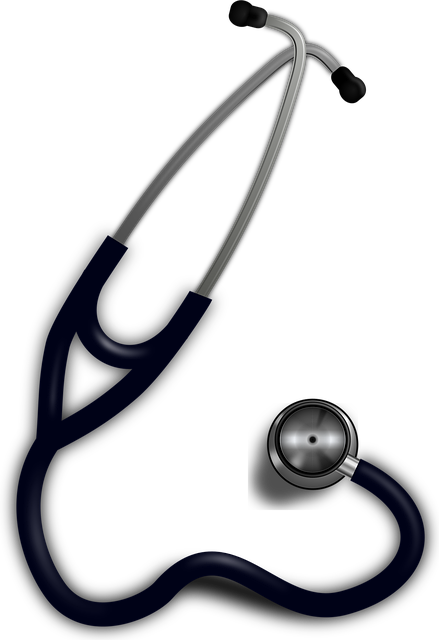IT professionals select diagnostic tools prioritizing trust, focusing on reliability, security, and accuracy to maintain data integrity in complex infrastructures. They favor advanced tools like handheld devices and medical image analysis software for efficiency. The goal is swift issue identification and resolution, enhancing system performance and user satisfaction. Select Diagnostic Tools like blood analysis equipment and vital signs monitors streamline healthcare workflows, ensuring robust data security and improving patient outcomes through telemedicine. Transparency and precision are key to building trust and navigating the digital landscape effectively.
In the fast-paced world of technology, IT professionals rely on diagnostic tools to ensure smooth operations. Gaining their trust is paramount for any solution’s success. This article explores the factors that build trust among IT experts, delves into key attributes of reliable diagnostic tools, highlights popular choices in the industry, and showcases how transparency and accuracy enhance credibility. Through case studies, we demonstrate real-world success stories, providing valuable insights for selecting the best diagnostic tools.
- Understanding IT Professional Trust Factors
- Key Attributes of Reliable Diagnostic Tools
- Popular Choices in the Industry Today
- Enhancing Trust Through Transparency & Accuracy
- Case Studies: Real-World Success Stories
Understanding IT Professional Trust Factors

IT professionals place a high value on trust when selecting tools for their operations. Several key factors influence this decision, with reliability and security being at the forefront. They seek tools that consistently deliver accurate results, ensuring the integrity of data and systems. This is particularly critical in the context of managing complex IT infrastructures and sensitive user information.
When it comes to choosing diagnostic tools, professionals consider factors such as ease of use, compatibility with existing systems, and robust support from manufacturers. Advanced tools like handheld diagnostic devices and medical image analysis software have gained prominence due to their versatility and efficiency. These tools streamline processes, enabling faster issue identification and resolution, ultimately enhancing overall system performance and user satisfaction.
Key Attributes of Reliable Diagnostic Tools

When IT professionals need reliable diagnostic tools, several key attributes come into play. Firstly, accuracy is paramount; the tool must provide precise and consistent results to ensure effective problem-solving. Secondly, reliability is crucial, as these tools often handle critical tasks and should perform consistently under various conditions. Portability is another significant factor, especially with portable clinical analysis instruments, which can be easily deployed in different locations without sacrificing performance.
Moreover, ease of use and intuitiveness are essential for IT professionals who might not have a medical background. Non-invasive health assessment tools that offer simple, fast, and user-friendly interfaces allow technicians to focus on interpretation rather than navigation. Lastly, advanced features like automation and integration capabilities can streamline workflows, making them more efficient with advanced blood analysis equipment or other sophisticated diagnostic devices.
Popular Choices in the Industry Today

In today’s digital age, IT professionals rely on a variety of tools to streamline their work and ensure efficiency. Among the most popular choices in the industry are diagnostic tools that facilitate advanced blood analysis equipment and vital signs monitors, enabling accurate and prompt assessments. These tools have become indispensable for remote healthcare management, particularly through telemedicine screening tools that allow professionals to conduct screenings from a distance.
The selection of these diagnostic tools is guided by their ability to provide real-time data, reduce errors, and enhance overall patient care. As the field continues to evolve, IT professionals are increasingly looking for innovative solutions that integrate seamlessly with existing systems, ensuring optimal performance and data security. This trend reflects the industry’s commitment to leveraging technology for better healthcare outcomes.
Enhancing Trust Through Transparency & Accuracy

In today’s digital landscape, enhancing trust among IT professionals is paramount, and transparency along with accuracy are key drivers. By providing clear, detailed insights into how tools and systems function, organizations can foster a culture of trust. This involves ensuring that every step of the process—from data collection to analysis—is transparent, allowing professionals to understand the ‘whys’ behind decisions made by diagnostic tools. For instance, when implementing rapid antigen detection systems or otolaryngology screening equipment, clear communication about their operational capabilities and limitations can significantly boost trust.
Accuracy is equally vital; precise results from tools like remote patient monitoring devices are essential for maintaining confidence among IT professionals and end-users alike. Regular audits, rigorous testing, and continuous updates ensure these tools meet the highest standards, thereby bolstering overall system reliability.
Case Studies: Real-World Success Stories

In today’s digital era, IT professionals are increasingly relying on advanced diagnostic tools to streamline operations and ensure optimal performance. Case studies from various sectors highlight the success of implementing portable clinical analysis instruments and non-invasive health assessment tools, which have become indispensable for efficient troubleshooting. These innovative solutions offer quick and accurate data, enabling tech experts to identify issues swiftly and implement effective remedies.
For instance, leading healthcare institutions have adopted vital signs monitors as a standard practice for continuous patient monitoring. This real-world application demonstrates how portable clinical analysis instruments can enhance diagnostic precision while reducing response times in critical care settings. By leveraging these tools, IT professionals contribute significantly to improved patient outcomes and operational efficiency, solidifying their role as trusted experts in their field.
When it comes to choosing diagnostic tools, IT professionals must consider factors that build trust. By prioritizing transparency and accuracy, they can enhance reliability and make informed decisions. The case studies presented highlight successful implementations of various tools, demonstrating their impact on efficient problem-solving and improved user experiences. When selecting tools, keeping these key attributes in mind ensures a trustworthy and effective solution for any IT challenge.
